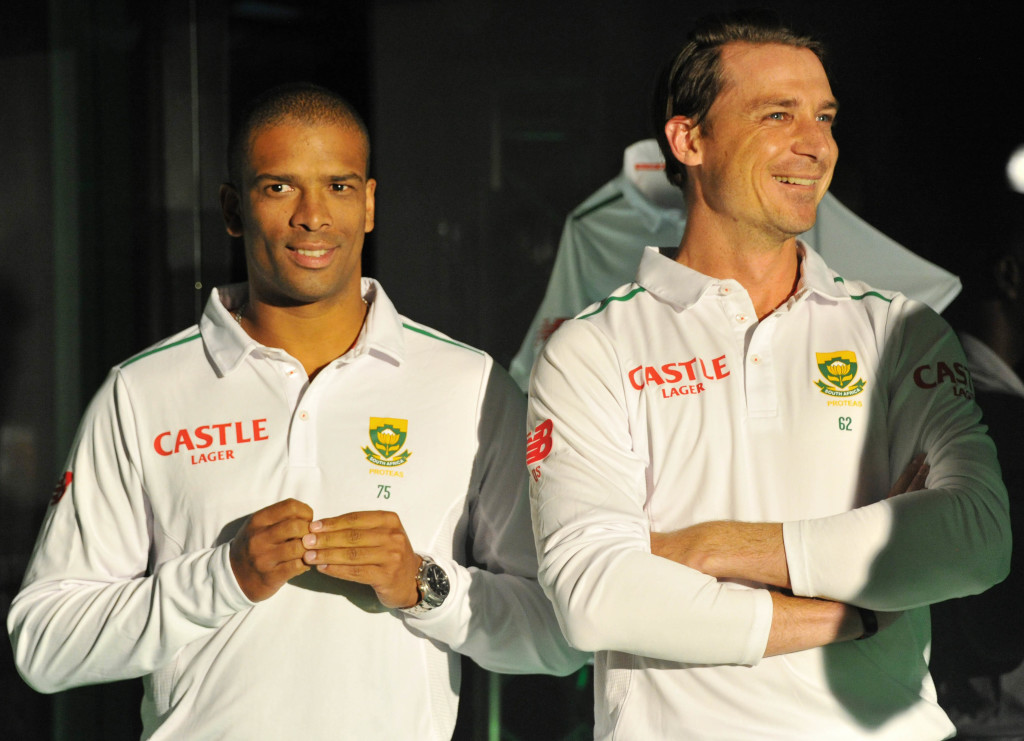The Proteas did not lose two back-to-back Test series because they are a team in ‘transition’.
In sporting terms, a transition means you have lost key players, usually after a period of success, and a bunch of new players have replaced the old ones and now the rebuilding process starts.
How many players constitutes a transition? Two? Four? Six? The answer is probably also dependent on how many players make up the team sport you are referring to. There are 11 players in a cricket team. How many of them would you have to lose to be able to say the team is going through a transition?
The question must be asked because it was one of the main reasons given by coach Russell Domingo and some of the players as to why the Proteas have struggled in back-to-back Test series while being the No 1-ranked team in the world.
Firstly we have to acknowledge that the Proteas, as a Test team, have enjoyed unparalleled success over the last 10 years, especially away from home where they didn’t lose a Test series for nine years. That was an incredible achievement which left me wondering if I, as a cricket fan, ever really appreciated it. Nine years. Back-to-back series victories over Australia and England in their own back yard (to name a few).
The 3-0 loss against India in India, which ended the run, has put the previous nine years into perspective. South African fans need to realise the Proteas had a golden generation of players who’s careers all just happened to coincide at roughly the same time.
Jacques Kallis, Mark Boucher, Shaun Pollock, Makhaya Ntini, Graeme Smith, AB de Villiers, Hashim Amla and Dale Steyn.
All of them will go down as not only legends of South African cricket, but legends of the game in general. But, when talking about the current ‘transition’ of the side, names like Boucher, Pollock and Ntini can’t be used as examples of players that have been lost due to retirement.
Why? Because South Africa remained successful and arguably became even more successful after they retired, and because Boucher was the last one of the three to retire back in 2012. The core of that golden generation is Kallis, Smith, De Villiers, Amla and Steyn. What people need to realise is that players of that calibre and talent don’t just pop up every year. Unlike our rugby, South African cricket does not have an endless supply of world class talent just waiting to get an opportunity.
Kallis was a phenomenon in that he was able to play the game for 18 years until he was 38, while batting, bowling and fielding. That just doesn’t happen anymore. Smith was the first player in history to captain his country in 100 Tests. De Villiers is arguably the most naturally gifted batsman this country has produced in decades. Amla is world class. Steyn is, in my opinion, the best fast bowler South Africa has ever produced and one of the very best to have ever played the game.
Legends. All of them.
So why are we expecting the current lot to continue being the best in the world while systematically losing special players? It’s unrealistic.
Australia dipped after losing a string of legends in 2007. They were terrible for the next few years. The West Indies, well, they haven’t been the same since the nineties. South Africa have just experienced a period of exceptional success in the Test arena because the careers of some truly exceptional players coincided for the best part of 10 years.
Strap in and put away the knives because it can’t last forever. Hopefully it never happens but should South Africa lose De Villiers, Amla and Steyn at roughly the same time, a true rebuilding phase will begin and the golden generation of players will be well and truly over.
Which brings us back to the question about ‘transition’. Did the Proteas lose against India 3-0 and England 2-1 (at home) because they are going through a transition? I don’t think so.
I believe they dipped due to a number of factors. The first one was the conditions they faced in India. Unable to cope with the difficult pitches, the batsmen suffered a complete meltdown in confidence and belief. They felt they had prepared well for conditions they thought they were going to get, but it was even worse and tougher than they anticipated.
The psychological blow was massive, and it continued into the England series. Faf du Plessis admitted as much during the second Test in Cape Town when he talked of the ‘ghosts’ of India and how the batsmen were struggling with those ‘demons’ during the first Test in Durban.
The second big factor was injuries. South Africa have had rotten luck with injures over the last year, specifically to Dale Steyn and Vernon Philander. Any team would struggle without their two best bowlers, especially in South Africa’s bowling friendly conditions.
If they were fit, Hardus Viljoen, Chris Morris and Kyle Abbott would probably not have featured in the England series. Kagiso Rabada was South Africa’s best bowler in the series, while Temba Bavuma was the team’s third highest run-scorer. Stiaan Van Zyl failed but Stephen Cook scored a century on debut.
When you consider all that, and the fact that the quality in the bowling attacks was the major difference between the two sides, I don’t think a ‘transition’ can be blamed for the poor results. A bowler, a middle-order batsman and an opener. Those are the three positions going forward that will be filled by new faces if everyone else is fit. Viljoen, Morris and Abbott are fringe players, who had to play because of injury, and will only be considered if there are injuries or retirements.
Too many players lost form at the same time for different reasons. Couple that with a nightmare series (India) and some rotten luck with injuries and the struggle starts to make sense.







